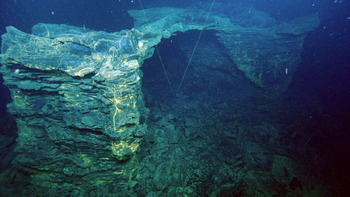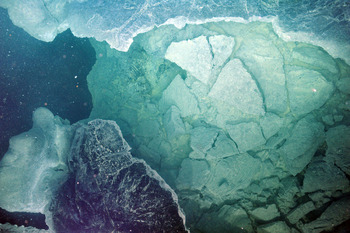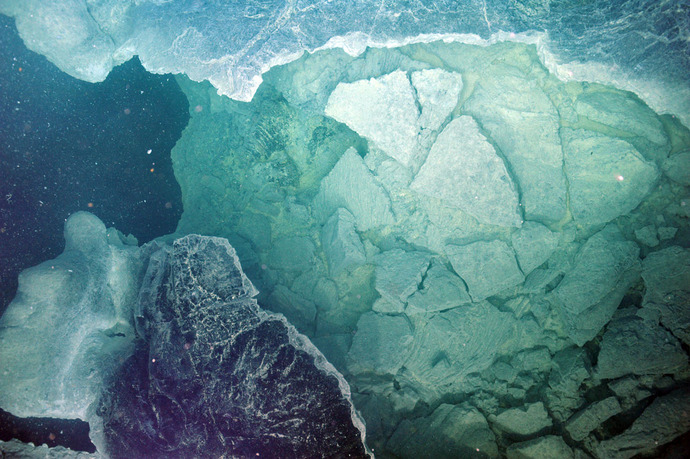ROPOS was in the water by mid afternoon for the start of Dive 1472 – a long one anticipated to run for the next 20-24 hrs! The first part of the dive focused on a new snowblower site, first visited by Bill Chadwick and his team a few weeks ago. Upon landing, we conducted a series of survey lines 75 m in length and 10 m apart to get a sense of the size of this field. It is marked by fantastic zones of collapse, myriad columns and most importantly large, focused sites of diffuse flow that are emitting significant amounts of biologically-produced material (floc). Many of the sites are collapsed “blisters” in the lobate flows that provide windows into the deeper biosphere in the subsurface. One spectacular site is located at the floor of a collapse zone. It is a large “pit” with so much flocculant material in the water column the bottom of the snowblower site cannot be seen – it is reminiscent of driving through a snowstorm. The team adopted the name of Khione for this site – the Greek Goddess of Snow (also spelled Chione) – as suggested by A. Gridley, an onshore viewer of the live stream. This site is important because it will provide insights into microbes that thrive/bloom immediately after an eruption and perhaps new insights about the deep biosphere.
Following imaging of the snowblower site, ROPOS traversed ~ 1 km south to the old Marker 33 vent site (now 166), which is a site of diffuse flow that was completely covered by the April 2011 eruption. This area is now marked by lobate and pillow flows covered in a dense coating of brown-orange filamentous bacteria, with zones of active flow hosting white filamentous mats. Small tubeworms, scale worms, and palm worms have already colonized this site.
Following completion of the Marker 33 survey, ROPOS turned south to head towards the International District where it will begin a cable route survey to another hydrothermal site called Bag City that is located near the southern terminus of the caldera. The dive may end back in the International District to examine possible future deployment sites and to recover a microbial incubator-temperature probe deployed last year and an acoustic current meter deployed a few days ago. The current meter will provide additional important information about bottom currents in the caldera of Axial. If time allows, ROPOS may transit south to near the southern terminus of the caldera to examine numerous vent sites.



